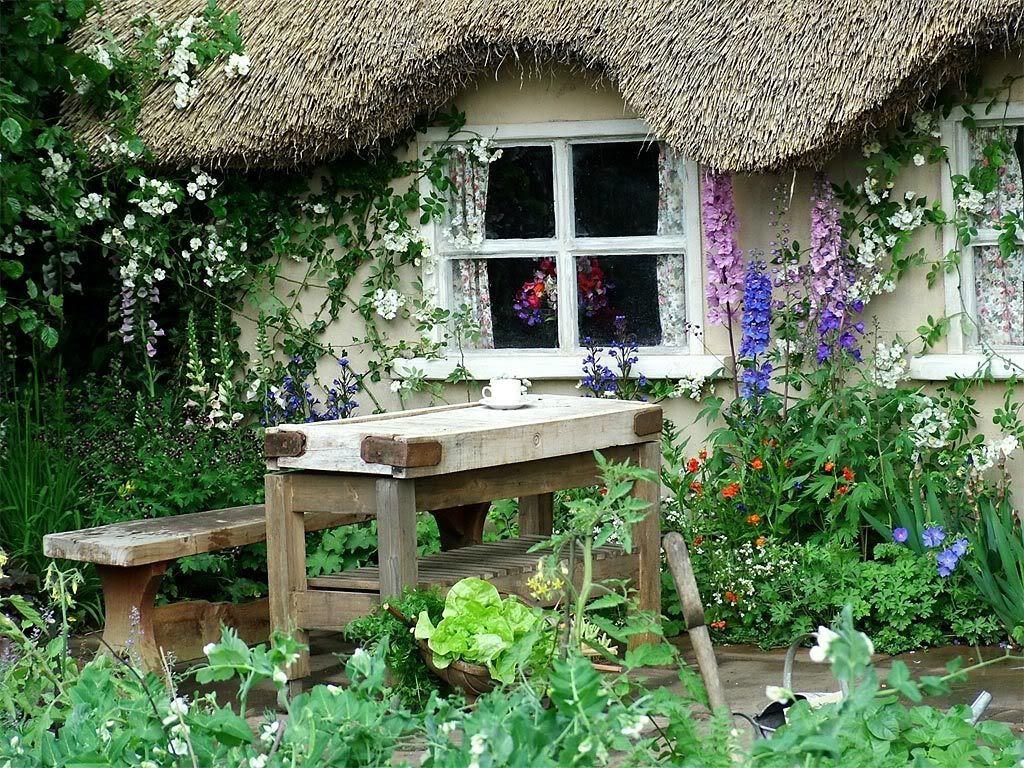
In my mind, I often associate William Morris with intricate patterns. I love his beautiful designs for textiles, wallpaper, wall and floor coverings so much that I often forget that he was a huge fan of plain surfaces. Many of our ideas of modern decorating are actually derived from the Arts and Crafts Movement, with its emphasis on clean lines and simple, useful decoration.
How to create a home with a Morris "feel"? Here are a few basic tips for Morris-inspired decorating:
1. Seek out quality furnishings that emphasise craftsmanship as opposed to stuffing your home with unnecessary clutter. For some fine examples of craftsman furniture, visit Treefrog Furniture.
2. If your home has damaged woodwork, paint it white to create a fresh "canvas." It creates a sense of lightness and brightness that was appreciated by Morris and his wife Jane, who painted the damaged paneling at Kelmscott Manor white.
3. Use local materials and designers if possible.
4. Adherence to the use of natural elements was a huge part of the Arts and Crafts Movement. Use natural materials like beautiful woods, brick and stone.
5. Nothings says neo-medieval like wrought iron! (Metal also has an incredibly earthy feel). One of my favourite re-interpretations of Medieval decorating (combined with Art Nouveau details) was the set design for Rivendell in Lord of the Rings. It was gorgeous! (you may have noticed that the Shire was heavily influenced by the Arts and Crafts Movement--take a second look at Bilbo Baggins hobbit hole! It looks like William Morris lived there!). I should do a post on Lord of the Rings set design...
6. Natural colours were another important aspect of the movement, and one that hearkened back to medieval times. Morris and others used paint schemes that were borrowed from nature, leaning heavilly on goldenrod yellows, burnished browns, cimarron and Indian reds, sage and moss greens, and a neutral palette of earthy tans, toasts, and beiges. Together, these natural colours create continuity between your home and the natural world.
7. Lighting should seem as natural as possible. Large windows are wonderful if you have them, otherwise, ligthen up your interior by choosing lighter colours and create soft (not harsh, bright) lighting with pillar lighting.
8. Decorate with books! Books are already useful, so try to make sure that they are beautiful as well. Invest in hardbacked books that you love to look at. Collect illustrated children's books. Find a bookcase you love, or better yet, build built-in bookcases!
9. Fill your home with beautiful art. This doesn't just mean paintings! Morris abhored the division in the arts between painting, sculpture, needlework and other forms of craftsmanship. Simply find beautiful things that suit your style.
10. Don't be afraid to blend! Start with one thing in the room your decorating that you LOVE. Then just gradually try to make sure that everything else in that room complements it (just another way of saying, have nothing in your houses that you do not know be useful or believe to beautiful).
Monday, March 3, 2008
Decorating a la Morris
Posted by
Margaret
at
8:25 AM
![]()
![]()
Labels: decorating, medieval, william morris
Subscribe to:
Post Comments (Atom)


4 comments:
Nothing can be beautiful which is not true.
John Ruskin
I wonder if Morris was from Middle Earth? In fact, I wonder if you are from Middle Earth? Are you of the fair folk?
So concisely and well-put! I too have noticed the hobbity look of Red House (circular windows, anyone?)
I adore wrought iron, and so when I just read _William Morris and Red House_ I was surprised to find out that Morris apparently was opposed to iron/metal fencing in his outdoor spaces! He wanted rush or wicker. Strange, eh? :)
Great "tutorial", Margaret! That house is my dream home--LOL! hhhmmm...B. Ferguson does make a good point about M. Morris perhaps being of Middle Earth origins! That is a very Hobbit-like dwelling...Happy Day ((HUGS)) Oh, I've tagged you...stop by when you can!
I had always supposed that Middle Earth was of William Morris origin!
Post a Comment